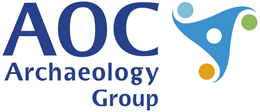Data from an Archaeological Recording at Northwood Mitigation, Middleton, Kingsbury, Warwickshire, 2020-2023 (HS2 Phase One)
High Speed Two Ltd., AOC Archaeology Group, Connect Archaeology, 2023. https://doi.org/10.5284/1122099. How to cite using this DOI
Data copyright © High Speed Two Ltd. unless otherwise stated
This work is licensed under a The Open Government Licence (OGL).
Primary contact
High Speed Two Ltd.
2 Snowhill
Queensway
Birmingham
B4 6GA
United Kingdom
Tel: 08081 434 434
Resource identifiers
- ADS Collection: 5627
- DOI:https://doi.org/10.5284/1122099
- How to cite using this DOI
Introduction
![E facing section of linear slot [124] No/B](images/1N20NWDAR_AREA_A_DSC_0253.jpg)
Project Summary
This collection comprises text, images, spreadsheets, databases, gis and site records data from archaeological mitigation works carried out by Connect Archaeology between 5th October and 17th December 2020 at WP29D North Wood / Middleton Farm, near the village of Middleton, Warwickshire. Two archaeological mitigation areas (Mitigation Area A and B) were identified as having archaeological potential during previous archaeological investigations, including archaeological trial trenching.
The general aims of the archaeological recording at North Wood / Middleton Farm were:
- To expose surviving archaeology in the mitigation areas through the application of an archaeologically controlled topsoil strip using plant equipped with a toothless bucket;
- To archaeologically excavate and record all significant archaeological features within the mitigation areas, in order to clarify the nature, date, extent and survival of any remains revealed and thus contribute to understanding of their heritage significance.
- The mitigation aimed to provide a permanent archaeological record for the purposes of contributing to specific GWSI: HERDS Specific Objectives;
- To obtain dating and environmental evidence (where possible) through retrieval of artefactual and ecofactual evidence;
- To carry out post-excavation assessment and analysis of recovered material;
- To publish the results of the excavation to bring the findings into the public and academic domain.
The specific aims of the Archaeological Recording were:
- To define the character, origin and extent of medieval activity and its relationship with the known medieval settlement at Middleton to the west and the manor house and deer park at Middleton Hall to the east;
- To confirm how many phases of activity are present; to provide a secure chronological framework for the phases of activity through recovery of additional finds, supplemented by scientific dating;
- To examine the environment and economy, including evidence for wood resource exploitation, through recovery of palaeoenvironmental and ecofactual information.
Re-Use Value Statement
The archaeological recording revealed evidence for activity from the 11th- late 14th Century, with later activity evidenced by pottery from the 14th to 16th and 18th Century and later, though this was not as widespread. The results could be compared with regional and route wide evidence from these periods to determine if it is regionally and culturally distinctive.
No further work is recommended for the artefact, ecofact and animal bone assemblages. Further analysis is unlikely to contribute to the project’s GWSI: HERDS research objectives.







